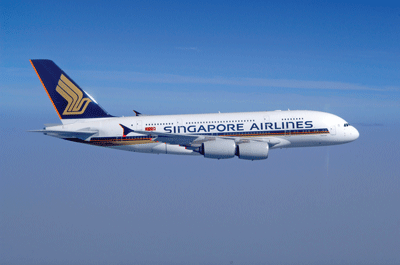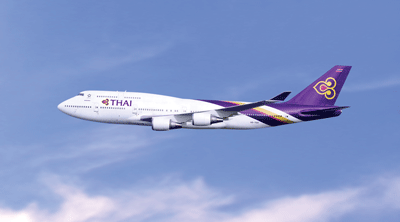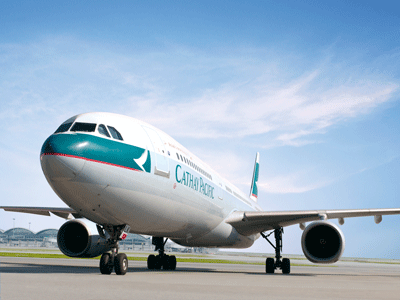Readers of Business Traveller have recently criticised Asian airlines’ Business Classes. In the main, this criticism has been directed not at the premium products and fine service found, by and large, between Asia and Europe, but rather on the airlines’ regional products.
The complaints centre around three carriers – Singapore Airlines (SIA), Cathay Pacific and THAI Airways. Previously, all three prided themselves on product consistency, but nowadays the picture is clouded by the use of their diverse fleets.
In particular, our readers are asking why SIA passengers flying from Europe to Australia can encounter up to four different Business Classes (each with differing standards) on a return trip, or why THAI Airways can get away with offering a premium product that might be three generations behind its rivals.
It never used to be like this. In the early 1990s, Business Class passengers marvelled at how Asian airlines consistently provided long-haul comfort on regional flights. These Asian carriers don’t have small planes in their fleets, so executives enjoyed spacious seating and posh food on hops such as Kuala Lumpur-Singapore or short stages such as Bangkok-Kuala Lumpur. For a comparison, consider that these services are similar in length to London-Paris or London-Vienna, on which routes Business Class passengers had to tolerate Economy Class standards of comfort.
But as Business Class changed beyond all recognition in the ensuing years, this happy situation in Asia could not last. In the early 1990s, a Business Class passenger could expect seven-across (2-3-2) seating on the Boeing B747’s lower deck with 40 to 45 inches of pitch (legroom). Seats boasted a reasonable, rather than steep, angle of recline. Fast-forward to today and we find that the latest Business Classes have improved hugely, and now provide 60 to 80 inches of pitch, four-across seating (1-2-1) on a wide-bodied plane such as the B777 or Airbus A380 superjumbo, and seats that recline to horizontal.
All of this is good news for travellers, but it meant that Asian carriers found it impractical and economically unsustainable to offer passengers the same business class seat on, say, a two-hour flight between Hong Kong and Manila as they would on a 13-hour Hong Kong-London service. As a result, they developed more practical seating for regional or medium-haul routes. So within the region you now find less spacious seating and a denser cabin layout. The seating may resemble an older design but, for the airlines, it is more economical because they can fit more passengers into their premium cabins.
All of this sounds eminently sensible until readers discovered that this inferior product was popping up on routes that many travellers would consider long-haul rather than short-haul.
Singapore Airlines
SIA has rostered planes with its so-called “regional” or “medium-haul” product on routes such as Singapore-Sydney, which, at 6,300km in distance, is about 15 per cent further than London-New York or London-Dubai.

It is a let-down for SIA passengers who have, thanks to spacious four-across (1-2-1) seating on the A380 or B777-300ER, been in their own little world on the 12-hour flight from London and might now find themselves “downgraded” for the final seven-hour, 40-minute leg on to Sydney.
As reader Mark Roberts discovered when he boarded his Sydney flight in Singapore: “I travelled on the refurbished, but noisy, B777-300 with angled seats (in a 2-2-2 layout) and no privacy. You hear everyone from rows ahead and behind as there are no sound breaks. There are large gaps between the cushions and the seat shell. Staff were using serving tongs to fish out items that passengers had dropped [into the gap].”
Most other B777-300s have not yet been refurbished so feature even denser seven-across 2-3-2 recliner seats. They normally ply routes within South-East Asia but, strangely, they appear on SIA’s 13-hour, 8,250km service linking Singapore with Cairo via Dubai.
The B777-300s are also substituted for more modern planes when the need arises. Travellers report that when the cream of SIA’s fleet was stranded at European airports during the January snow, these B777-300s were pressed into service on routes such as Singapore-Auckland (nine hours, 50 minutes) and Singapore-Tokyo (six hours, 35 minutes).
Most complaints focus on the B777-300s, the refurbishment programme of which is running late. Nicholas Ionides, SIA’s vice-president of public affairs, says: “We have experienced a delay but are confident things will be back on track soon. To date, we have fitted one B777-300 with the newer seating and this plane operates the Singapore-Sydney route. Six more planes are due to follow.”
The picture is further confused as SIA mixes and matches plane types on routes both within the region and to Australasia. So passengers can experience the superior A380 or B777-300ER planes alongside different aircraft with different seating. And yet the fare you pay (A380 flights excepted) remains
the same.
Singapore reader Arthur Lim says: “SIA has two flights on the Auckland route but the morning flight uses the B777-200 while the evening one is operated by the B777-300ER. If you are on the evening flight then good for you. But if you take the morning one, the B777-200 has just the normal seat with no lie-flat function.
“And guess what? If you fly to Hongkong, you will find that two of the flights are operated by an A380 and a B777-300ER, all with the latest seats. And it’s only a three-hour, 45-minute flight.”
In response, Ionides says: “We are working to introduce the newer products progressively to achieve consistency across our fleet. However, upgrading of products and services, especially seats, requires considerable time and there will inevitably be periods when differing product types appear on a particular route. We deploy the A380 to Hongkong because flights on this route operate at consistently high load factors. We recognise that passenger needs and preferences change over time and we continuously upgrade our products and services to provide them with the best
travel experience.”
Thai Airways
The picture is complex at THAI Airways, which has an even more varied fleet and where last-minute plane changes are not uncommon.?For years, readers using THAI between Europe and Bangkok have complained about the variety of Business Class seats found on the carrier’s B747-400s.

A company spokeswoman said: “We operate two B747-400 versions to Europe. One has 40 [angled lie-flat] business class seats and is utilised primarily to London, Frankfurt and Paris Charles de Gaulle. But we have another B747-400 version with 50 [cradle-style] business class seats and this can also appear on these routes in some ad hoc circumstances.”
As for THAI’s other European destinations, such as Rome and Copenhagen, it can be a lottery as to which B747 version appears.? Business Traveller’s Jenny Southan encountered an older B747-400 when she returned from Bangkok in October. In her Tried and Tested review she writes: “The B747 that serves the London route has not yet been fitted with the new Business Class seating and this is quite evident – they are pretty worn and battered and the fabric on the lower section of the seat completely came away during the flight.” (See http://www.businesstraveller.com/tried-and-tested for the full review.) The older seat is pictured above; THAI Airways was unable to provide us with an image of the new seat.
Strangely, the airline has used a flagship A340-600 for its daily Bangkok-Zurich service for a number of years. This plane features the company’s best business product, albeit angled lie-flat. Why does THAI favour Zurich over other European cities? Are the Swiss fussier, or do they pay more for their tickets ? The answer, according to the airline, is simply that there is less demand on this route (the A340-600 carries 108 fewer passengers than the B747-400).
THAI’s oldest B747-400s have seating that is three generations behind the world’s best. These are reserved for South-east Asian routes, where they can appear at any time. Says traveller Michael Shade, who was flying Singapore-Bangkok: “There was a last-minute plane change to an old B747-400. I have been flying THAI for two decades and this plane had exactly the same business class seat THAI used 20 years ago. It was uncomfortable and worn out.”
But THAI passengers can strike lucky. Reader Lim says: “Service on THAI is usually very good but the airline can be a mixed bag when it comes to fleet utilisation. THAI is supposed to use its A330s with regional seating on local routes. But I’ve been on a Singapore-Bangkok route operated by a B777-200 with long-haul, angled lie-flat seats, and I’ve even known THAI to use a modern A340-600 out of Kuala Lumpur.”
In a recent interview with Singapore’s financial journal The Business Times, THAI Airways president Piyasvasti Amranand said: “The issue of seat comfort provides the biggest number of complaints that our airline receives from its customers.” THAI’s problem area of seat comfort will take time to fix. A spokeswoman says: “We plan to retrofit 12 B747s and eight B777-200s. This refurbishment will take two years to complete.”
Cathay Pacific
Cathay attracted reader criticism for the regional seating on its A330s. Some of these aircraft had appeared on overnight flights to Australia while the rest of the fleet was being retrofitted with fully-flat beds.

A spokeswoman says: “Our entire long-haul fleet has been fitted with the new seats, which are primarily designed for flights to India, the Middle East, Australasia plus Europe and North America. We try to put our flat-bed seats wherever we know passengers want to sleep. On our regional flights [normally less than five hours, with many about two to three hours], passengers spend most of the flight awake so here we have a different seat.”
One big difference between flying to Australia from Hongkong instead of Singapore is Cathay classifies that continent as a long-haul destination, whereas SIA considers it medium-haul. So irrespective of whether you fly Hongkong-Perth (seven hours, 40 minutes) or Hongkong-Sydney (nine hours) with Cathay, you are guaranteed a fully-flat bed.
How to get the right business class seat
Check plane types carefully.
Remember that a number of SIA’s services between Singapore, Sydney and Melbourne feature A380s and B777-300ERs. So if departing Europe, link these with A380/B777-300ER flights for the most spacious seating.
Bear in mind that Cathay Pacific is the only Asian carrier to provide fully-flat beds between Europe and Australia via Hongkong.
Use http://www.seatplans.com to check the cabin layout.
Note that THAI’s best product out of Europe is available from Zurich.
When travelling from London to Sydney or Melbourne, you can only be certain of getting the same product when taking a through flight with BA, Qantas or Virgin Atlantic.








